 "With-a-G is back to not having anything written after his username" (with-a-g)
"With-a-G is back to not having anything written after his username" (with-a-g)
11/21/2014 at 10:38 • Filed to: gt6
 10
10
 7
7
 "With-a-G is back to not having anything written after his username" (with-a-g)
"With-a-G is back to not having anything written after his username" (with-a-g)
11/21/2014 at 10:38 • Filed to: gt6 |  10 10
|  7 7 |
I'm a physicist, and my first reaction about the !!!error: Indecipherable SUB-paragraph formatting!!! was to scoff, but I started looking into it.
!!! UNKNOWN CONTENT TYPE !!!
https://en.wikipedia.org/wiki/Beam-powe…
http://www.dtic.mil/dtic/tr/fullte…
http://researchspace.csir.co.za/dspace/bitstre…
So apparently, it's a thing. The resources I find about it are all about aerial/space propulsion and have the laser power source on a separate ground platform, but since it is not a simple radiation pressure action/reaction, but uses explosive plasma bursts of air for the mass reaction, you can, in principle, bring the laser along with you on the vehicle. It's not a matter "troll physics" of bringing a fan with you to blow on your own sail.

As near as I can figure, the red thing on the rear pylon is the laser, pointing at the reflective cone. The problem here is that the laser aperture is very small.
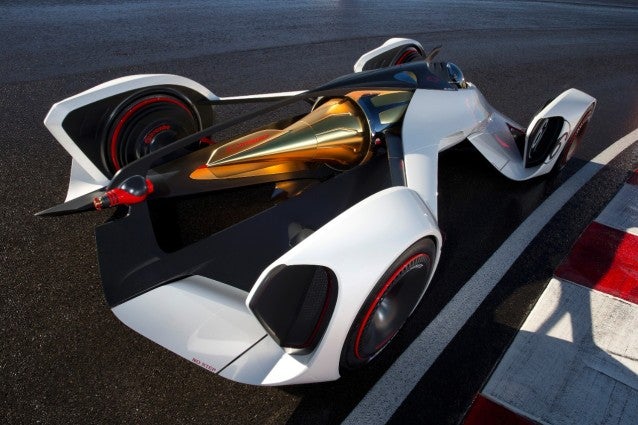
If the laser produces light with a high enough energy density to cause dielectric breakdown of air in the annulus of the combustion cone, then certainly it will cause dielectric breakdown at that laser aperture. It ought to have a broad collimated beam, but then that would be incompatible with the aerodynamics of a self-contained package, so this is complete fantasy.
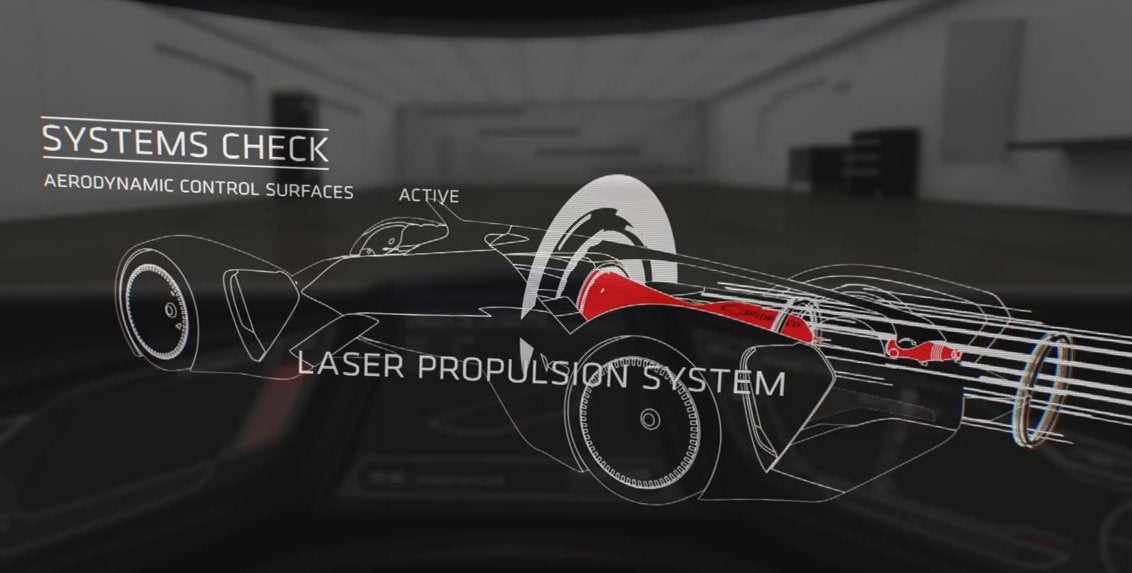
The Vision GT movie also refers to "downforce thrust vectoring" with a brief graphic, which is strange given the overall symmetry of the cone.
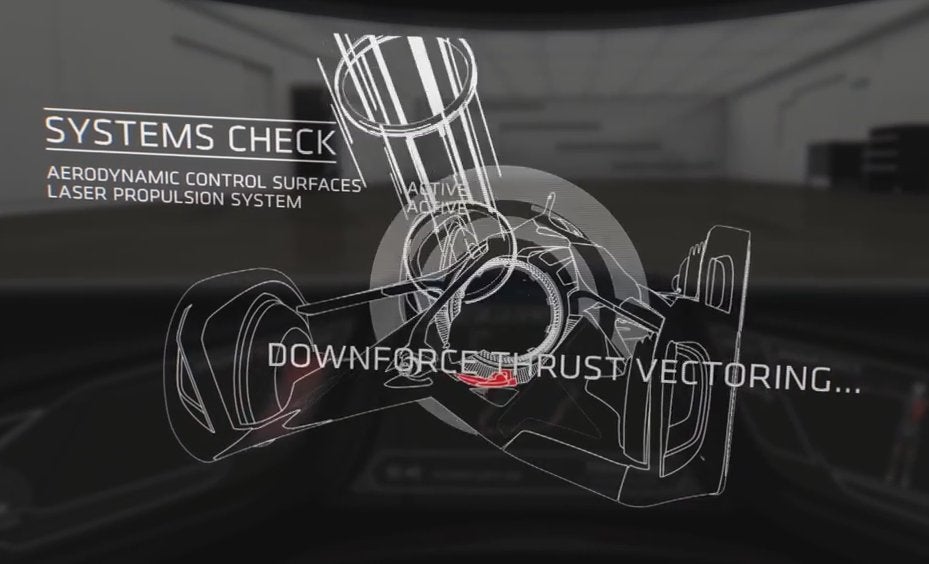
Perhaps it has something to do with the adjustable cone angle/air vent area shown here:
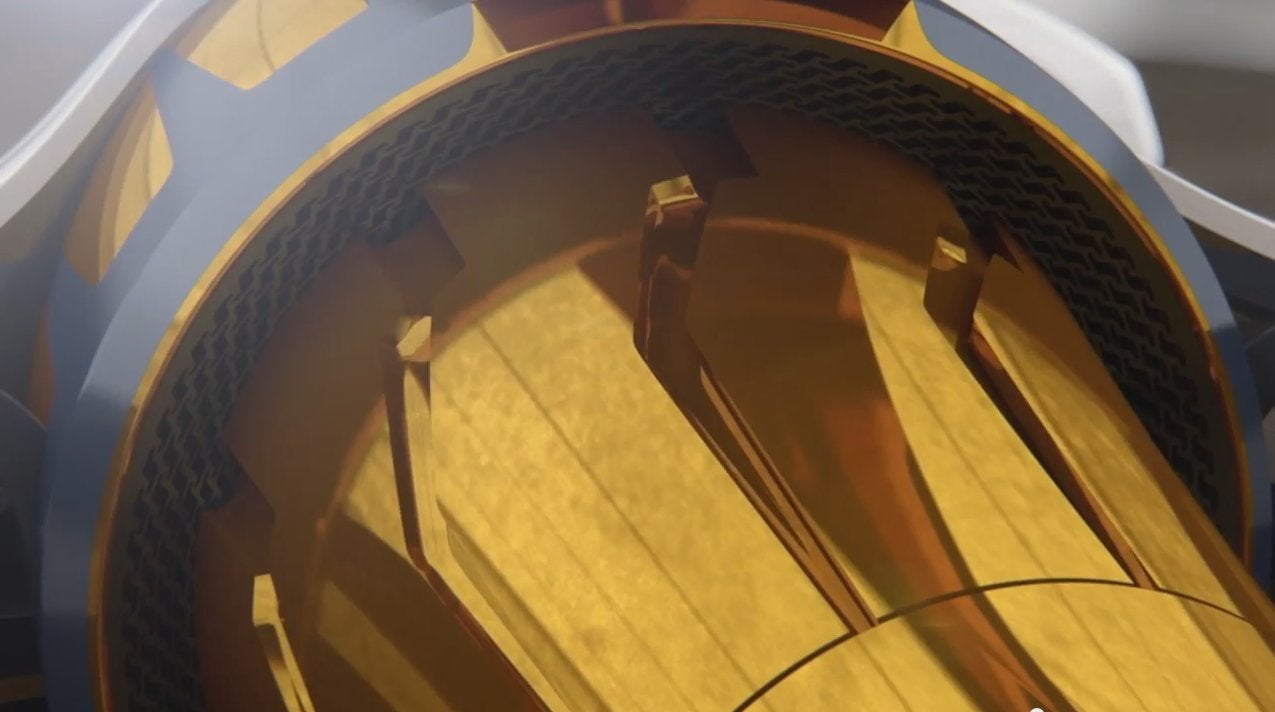
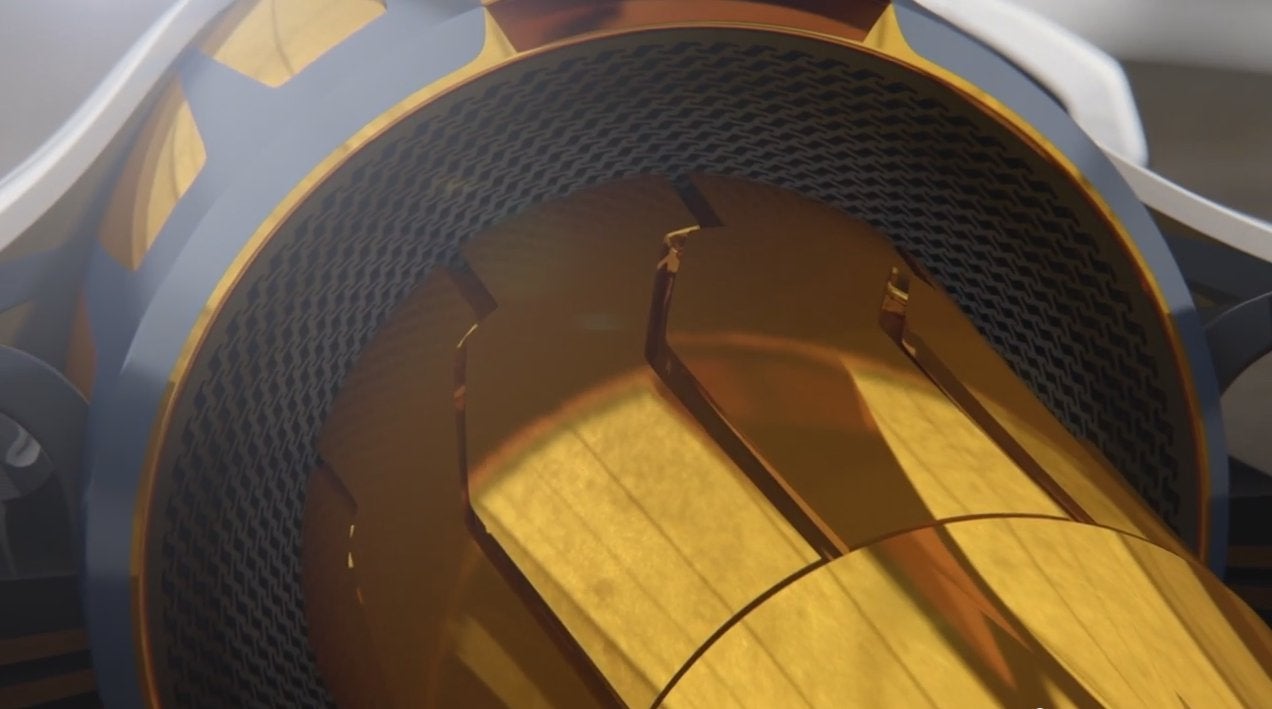
But they show the vanes contracting in a way that looks the same all around. Still, perhaps individual vanes could steer the thrust.
Also, I thought this was a really nice touch:
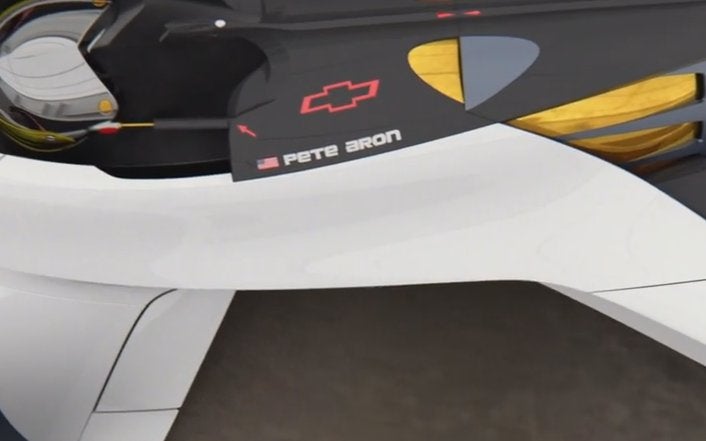
For all you who still haven't seen Grand Prix , "Pete Aron" is James Garner's character, the American F1 driver and protagonist. So fiction upon fiction.
Now with regard to the actual energy storage, they claim to use Lithium-ion batteries, rather than anything more exotic. (Why? Why not !!!error: Indecipherable SUB-paragraph formatting!!! in !!!error: Indecipherable SUB-paragraph formatting!!! ? Who cares since it's assuming future engineering advances anyway?)
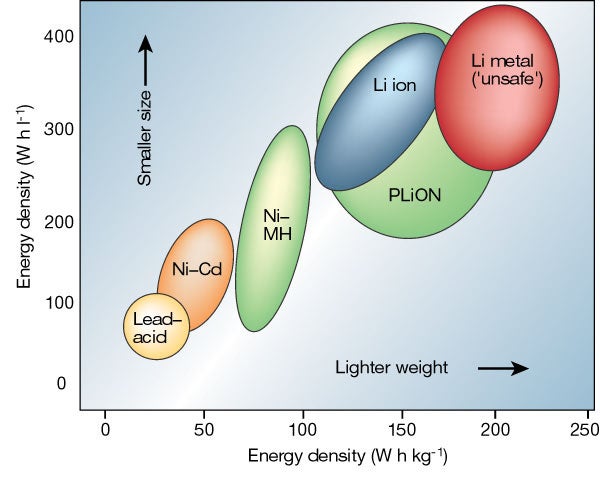
Let's assume that they have something slightly more exotic, say, the very top right of this graph, a battery technology that has 250 W h/kg and 400 W h/liter. I'm guessing the mass of the entire vehicle is no more than 600 kg, so an ultra generous estimate for the battery is 150 kg. That's going to be 94 liters of battery, the size of a 25-gallon gas tank, fit within and among the spindly "wing-suit" chassis. The total energy storage is then 250 Wh/kg (=900 kJ/kg) * 150kg = 135MJ. Their claimed 900 hp (671 kW) will deplete this entire (terribly optimistic) battery in 3 and a half minutes, assuming 100% efficient conversion from battery storage to kinetic energy. Obviously it's not running flat out for a typical grand prix lap. Now I'm also going to assume that the wheel hubs have regenerative braking, and that the efficiency of this system is 100%. The only loss I'm considering, then, is air drag. I'm going to be optimistic again, and assume that the coefficient of drag is 0.1 (remember the downforce can come from the thruster, so obtaining downforce via drag-inducing aero elements is not necessary) and that the front cross sectional area is 1 m^2.
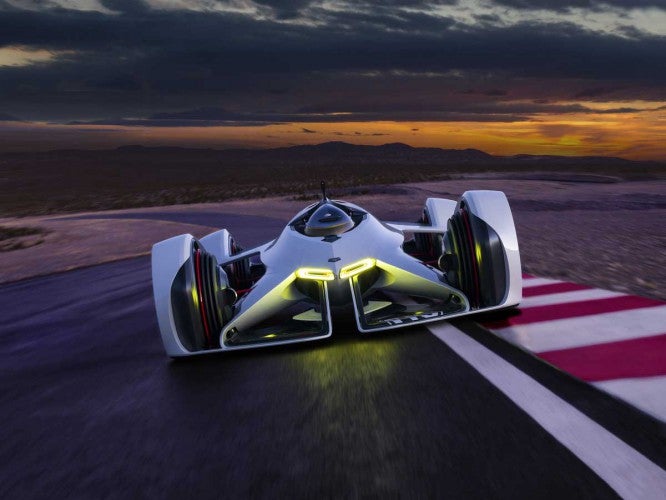
A little bit of finagling with the drag power equation assuming higher-than-F1 speeds results in a round estimate of 2 MJ of drag energy loss per typical grand prix lap. This means a depleted battery after 67 laps.
All these optimistic efficiency estimates probably mean that 10 laps is more "realistic," if that word has any meaning in the context of the laser-propulsion system. It would be nice to see Polyphony include battery pack depletion in the simulation, with modeling of losses in propulsion, regenerative braking, and air drag.
EDIT: a 200mph to 50mph braking event sheds 2MJ of energy, so even if regen braking is 90% efficient (75% is typical for Prius/Volt/Tesla tech), you will be losing an additional 2MJ per lap if there are more than a dozen or so braking zones.
 Aya, Almost Has A Cosmo With Toyota Engine Owned by a BMW.
> With-a-G is back to not having anything written after his username
Aya, Almost Has A Cosmo With Toyota Engine Owned by a BMW.
> With-a-G is back to not having anything written after his username
11/21/2014 at 10:46 |
|
GT as far as i know have realistic fuel consumption. Even some car like Honda CRZ or tesla Model S recharge their batteries due to engine braking.
Now i wonder if this car has the same as well..
 R Saldana [|Oo|======|oO|] - BTC/ETH/LTC Prophet
> With-a-G is back to not having anything written after his username
R Saldana [|Oo|======|oO|] - BTC/ETH/LTC Prophet
> With-a-G is back to not having anything written after his username
11/21/2014 at 10:47 |
|

 TheLOUDMUSIC- Put it in H!
> With-a-G is back to not having anything written after his username
TheLOUDMUSIC- Put it in H!
> With-a-G is back to not having anything written after his username
11/21/2014 at 10:59 |
|
Science With.a.G needs to be a regular feature.
 With-a-G is back to not having anything written after his username
> TheLOUDMUSIC- Put it in H!
With-a-G is back to not having anything written after his username
> TheLOUDMUSIC- Put it in H!
11/21/2014 at 12:17 |
|
Yikes.
 7:07
> TheLOUDMUSIC- Put it in H!
7:07
> TheLOUDMUSIC- Put it in H!
11/21/2014 at 13:01 |
|
I broadly collimate this vector.
 StingrayJake
> With-a-G is back to not having anything written after his username
StingrayJake
> With-a-G is back to not having anything written after his username
11/21/2014 at 13:56 |
|
Holy shit. Just had flashbacks to freshman engineering and blacked out.
 Datsun4ever
> With-a-G is back to not having anything written after his username
Datsun4ever
> With-a-G is back to not having anything written after his username
11/22/2014 at 01:32 |
|
Really interesting read, thanks for posting this!